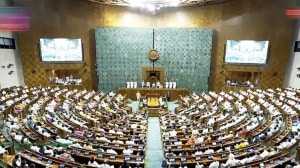By Dr. Bhaskar Nandi
Couple of observations are very much pertinent when one talks of liver disease in India. First, liver disease is common. Second, most patients with liver disease seek medical attention quite late into the course of illness. Third and most important, the common liver diseases as seen in clinical practice are all preventable.
Chronic Hepatitis B and C, Non-alcoholic fatty liver disease (NAFLD) and Alcoholic Liver Disease (ALD) are the commonest chronic liver disease seen in our country. Around 40 million people in India are estimated to have chronic Hepatitis B infections, while 6-12 million people are estimated to have chronic Hepatitis C infections.
Chronic HBV infection accounts for 40% of liver cancer (hepato-cellular carcinoma) and 20-30% cases of cirrhosis in India. Similarly, Chronic HCV infection accounts for 12-32% of liver cancer and 12-20% of cirrhosis. NAFLD has already been declared as a public health problem with over 50 % of general population having it with varying severity.
A third of all people with NAFLD will progress to chronic liver disease, liver failure and even liver cancer. Alcoholic liver disease is equally common in India and contributes significantly to over one lakh deaths caused annually by liver disease in our country. It is reasonable to conclude that liver disease is common cannot be ignored.
The problem of increased burden is compounded by the fact that most of the common liver diseases remain silent in its early stages. A common thread between Hepatitis B or C, NAFLD and ALD is that they are all silent for many years or even decades before they manifest with liver failure. By the time symptoms and signs of disease appear, the disease is beyond any reasonable cure and liver transplant remains the only curative therapeutic option. Given this situation, it is imperative that liver disease is detected early in the silent or asymptomatic stage and corrective measures initiated to prevent progression to liver failure.
Chronic liver disease with its high burden in the community and a long silent phase before it manifests is eligible for application of screening policy (criteria laid down by Wilson and Jungner for WHO). Maintaining ideal body weight, abstaining, or taking alcohol within safe limits, avoiding high sugar intake and vaccinating against hepatitis B are the validated
measures to maintain good liver health. Periodic check-up and screening for liver disease is an important value-addition towards maintenance of liver health. Screening may include a consultation with your doctor, a blood test for liver function – LFT and screening for hepatitis B and C (HBsAg and Anti-HCV), Ultrasound abdomen for liver morphology and fat, and
finally a Fibroscan to assess fibrosis in the liver. This select screening is sufficient to detect any liver disease at an early stage or in the silent phase of the disease and institution of corrective measures.
Liver disease is common and most remain silent at an early stage only to manifest late when no curative treatment is possible. Periodic checks and screening for liver health not only ensures early diagnosis and institution of curative treatment but also helps in prevention of disease.
(The author is a Head, Department of Hepatology, Amrita Hospital, Faridabad. The article is for informational purposes only. Please consult medical experts and health professionals before starting any therapy, medication and/or remedy. Views expressed are personal and do not reflect the official position or policy of the FinancialExpress.com.)








